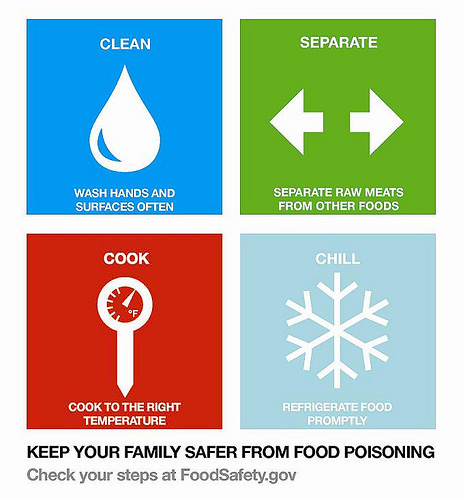
Agricultural News
Top 10 Food Safety Tips to Remember This Holiday Season
Fri, 12 Dec 2014 10:09:09 CST

The holiday season is here, and many will be gathering around the dinner table and spending time with family and friends. Oklahoma State University's Robert M. Kerr Food & Agricultural Products Center wants to make sure you keep food safety tips in mind when you are preparing those holiday meals.
"The Centers for Disease Control and Prevention estimates that each year about one in six Americans get sick from foodborne diseases," said Peter Muriana, FAPC food microbiologist. "While the U.S. food supply is one of the safest in the world, food safety during the holidays is a must in order to prevent bacteria from growing and causing illness."
Here are some suggestions to ensure your holiday meal is not only delicious, but also as safe as possible.
1. Shop for holiday foods safely. Buy your meat preferably one to two days before you cook it, and keep the meat separated from the fresh produce when bagging. Extra caution should be used when buying fresh, stuffed turkeys because of the potential for bacteria growth in the stuffing. Pick up the meat, dairy, eggnog and eggs just before checking out.
2. Develop a master plan. Take in consideration your refrigerator, freezer and oven space to keep hot foods at 140 degrees Fahrenheit or higher and cold foods at 40 degrees Fahrenheit or below. If you use coolers, make sure you have plenty of clean ice and check it frequently to make sure the ice has not melted.
3. Wash hands often. Wash hands before, during and after food preparation to minimize bacterial contamination. Wash with hot water and soap up to your wrists and between your fingers for approximately 20 seconds.
4. Separate to avoid cross contamination. Use two cutting boards: one for preparing raw meat, poultry and fish, and the other for cutting fruits and vegetables, cooked food or preparing salads.
5. Wash all fresh produce. Rinse fruits and vegetables thoroughly under cool running water and use a produce brush to remove surface dirt. Even wash prepackaged greens to minimize bacterial contamination.
6. Thaw frozen meats safety. Defrost meats in the refrigerator approximately 24 hours, depending on size, or submerge meat in its original package in a pan of cold water enough to cover the meat and allow 30 minutes for every pound.
7. Cook to proper temperature. Use a thermometer to make sure food has been cooked enough to kill bacteria. Turkey, stuffing, side dishes and all leftovers should be cooked to at least 165 degrees Fahrenheit.
8. Keep guests out of the kitchen. Holidays occur during cold and flu season, and preventing guests from sampling the food while it is being prepared limits the amount of germs getting on the food. Serve appetizers to give guests something to nibble on until the meal is ready.
9. Refrigerate leftovers. Leftovers should be divided into smaller portions, stored in several shallow containers and refrigerated within two hours after cooking. Leftovers should be eaten within three to four days. If large amounts are left, consider freezing leftovers for later use.
10. Eating leftovers. Reheat leftovers to 165 degrees Fahrenheit throughout or until steaming hot. Soups, sauces and gravies should be brought to a rolling boil for at least one minute. Never taste leftover food that looks or smells strange. When in doubt, throw it out.
FAPC wishes you and your family a happy holiday season. For more information about FAPC, visit www.fapc.biz, call 405-744-6071 or email fapc@okstate.edu.
WebReadyTM Powered by WireReady® NSI
Top Agricultural News
More Headlines...



















